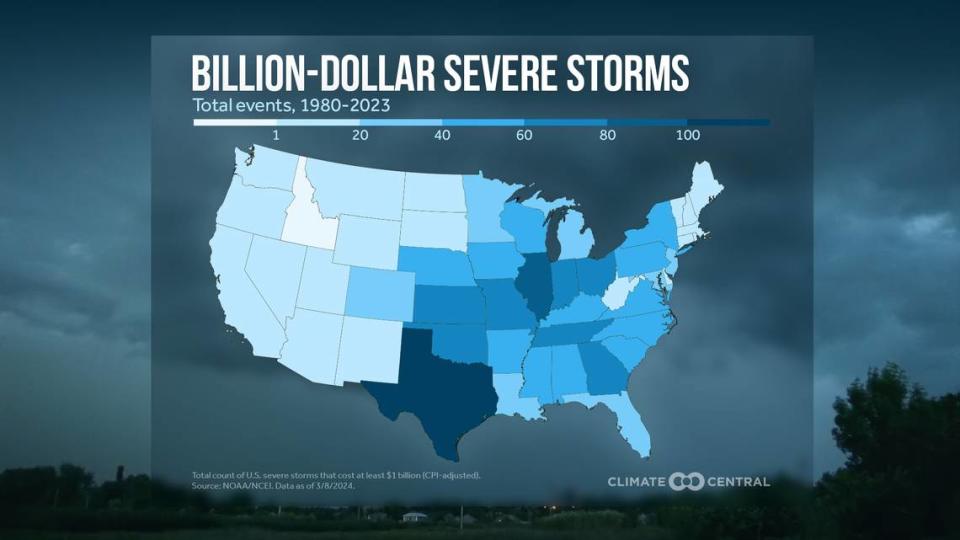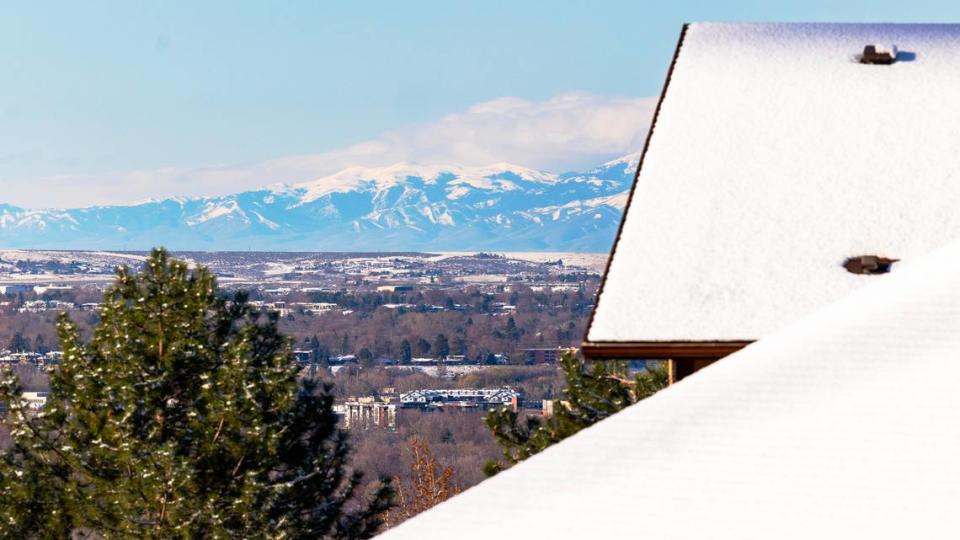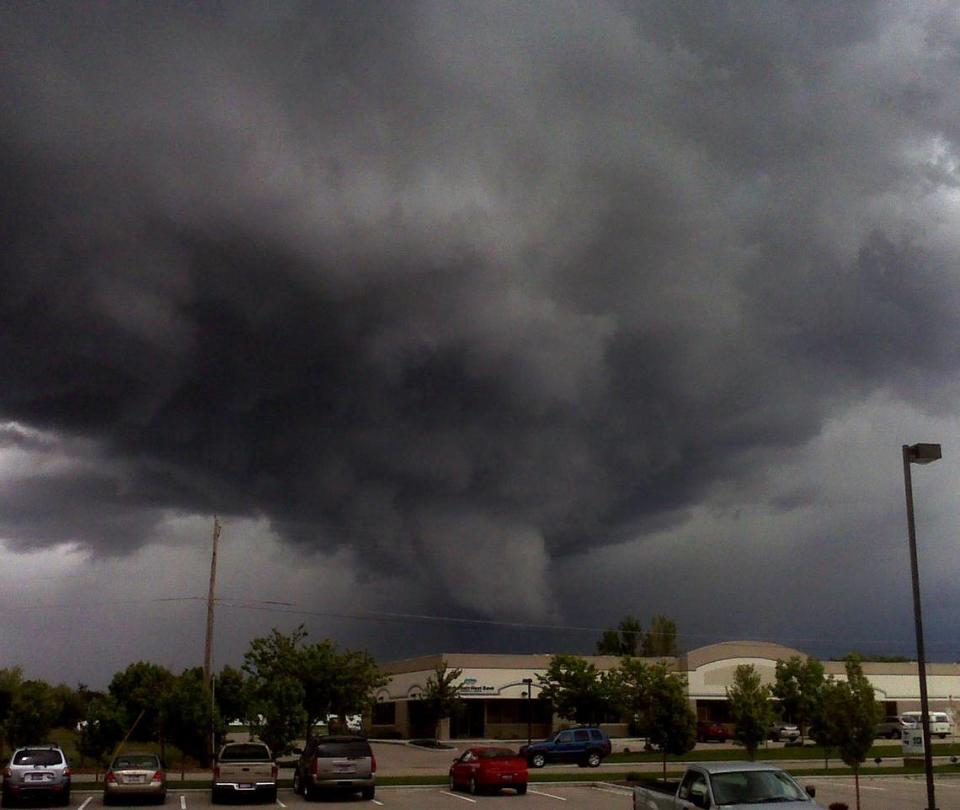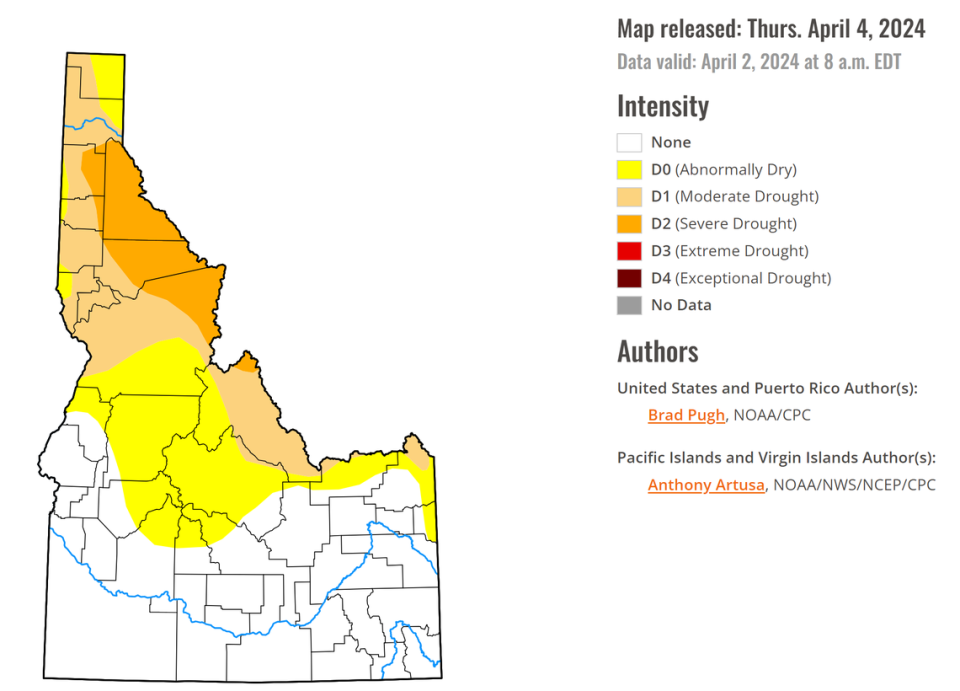Tornadoes in Idaho? Here’s why severe weather misses Boise. Could that ever change?
As Hurricane Hilary bore down on the California coast last August, dropping record rainfall in parts of the Southwest, Idaho earned its own little footnote in history.
The hurricane cone — the forecast path in which a hurricane will travel — included Southwest Idaho and Boise, marking the first time the Gem State was included in such a cone since the National Hurricane Center began creating them in 2002.
As it approached the Gem State, the storm had the potential to drop several inches of rain in the mountains around Boise and up to an inch in the City of Trees itself.
But then … it didn’t do much at all.
Boise received just 0.39 inches of rain as the remnants of Hurricane Hilary came to a stuttering halt at the Owyhee Mountains. Thus, another potentially significant event in Boise didn’t live up to the billing.
In fact, Idaho is (luckily) the least likely place in America where you’ll experience a genuinely devastating natural disaster.

According to Climate Central, the Gem State has experienced just one billion-dollar weather disaster since 1980, the fewest of any state. That single disaster was a drought during the summer of 1988, when a heat wave enveloped much of the Western U.S. all summer.
So why does Idaho receive few severe weather disasters, and what would have to change to expose the Gem State to the elements?
Idaho’s protective barrier
Idaho and mountains are synonymous. Between the Continental Divide along the state’s eastern side and other mountainous areas in the central and western parts, the Gem State has 36 major mountain ranges.
Idahoans primarily associate Idaho’s mountains with world-class ski resorts, backcountry adventures or spectacular hiking trails. But meteorologically, Idaho’s ranges and other peaks throughout the Pacific Northwest offer a lot more than pretty views.
They offer a level of protection.
“The mountains can wring out the precipitation,” Jay Breidenbach, a meteorologist with the National Weather Service in Boise, told the Idaho Statesman.
“So if we get a big storm that comes through Idaho, it first has to pass usually through Washington, Oregon or Northern California,” he continued. “And there are numerous mountain ranges between here and the coast.”
That’s what occurred with Hurricane Hilary — the Owyhee Mountains to Boise’s south sapped much of the storm’s strength and moisture before it could reach Boise.

But what about other weather?
Tornadoes are a destructive weather phenomenon that the mountains dissuade in the Gem State. Idaho averages less than one tornado annually, and Ada County hasn’t seen a tornado since four touched down on Aug. 3, 2000.
Compare that to 120 tornadoes recorded annually in Texas, 102 in Mississippi and 87 in Kansas.
“Out in the middle of the country where it’s flat, you can get a nice surge of moist, warm air coming out of the Gulf of Mexico,” Breidenbach said. “And when that interacts with a frontal system, that can set the environment, especially if there’s a lot of upper-level wind shear to interact with that moisture. That can cause the thunderstorm to tilt over and start to rotate. And so those are your tornado-producing supercell thunderstorms.”

Breidenbach continued that Idaho’s central mountains tend to disrupt cold fronts, so by the time a cold front reaches the Treasure Valley, it’s often not organized enough to begin rotating. Additionally, Idaho lacks the warm tropical moisture that the Midwest gets because the Owyhees often block it.
Of course, Boise isn’t impervious to natural disasters. Drought and wildfires are constant concerns for the state. Between 2011 and 2020, an average of 601,826 acres burned annually in Idaho — roughly the size of 11 Boises per year.
Breidenbach said partnerships between organizations such as the National Oceanic and Atmospheric Administration, Bureau of Reclamation and National Forest Service help mitigate Idaho’s wildfire risk. All three organizations work in tandem to monitor and fight wildfire conditions.
But if a wildfire akin to the Great Fire of 1910 — which burned 3 million acres of land across Idaho and Montana — were to flare up, Breidenbach thinks the damage could be catastrophic.
“If that happened today, it would be a multibillion-dollar disaster,” Breidenbach said, “especially with the amount of infrastructure we have across this state now.”
Goodbye, mountains?
So, what would have to change for Idaho to be more exposed to the elements?
You likely know the obvious answer: Mountains would have to disappear. Obviously, they’re not, but to play the hypothetical game, what would happen if they did?
“I think the frontal systems would still come through as they do now, but they’d probably be sharper when they come through,” Breidenbach said. “And if there are no mountains to the south of us, it’ll allow the monsoon moisture to surge more directly into the area.”
But yet again, even without the mountains, it’s not tornadoes or hurricane remnants that would put Idaho in danger.
It’s drought.

Idaho has over 13 million acre-feet of water in reservoirs, much of which comes from snowmelt in the mountains. Without all of that water, Idaho would experience severe drought conditions way more regularly.
“The mountains are so important to us in Idaho,” Breidenbach said. “Of course, all the recreation, and we’ve got a lot of snow in the mountains right now. That’s our stored water that eventually will come into the reservoirs. So these mountains kind of help this with those drought-type situations.”

